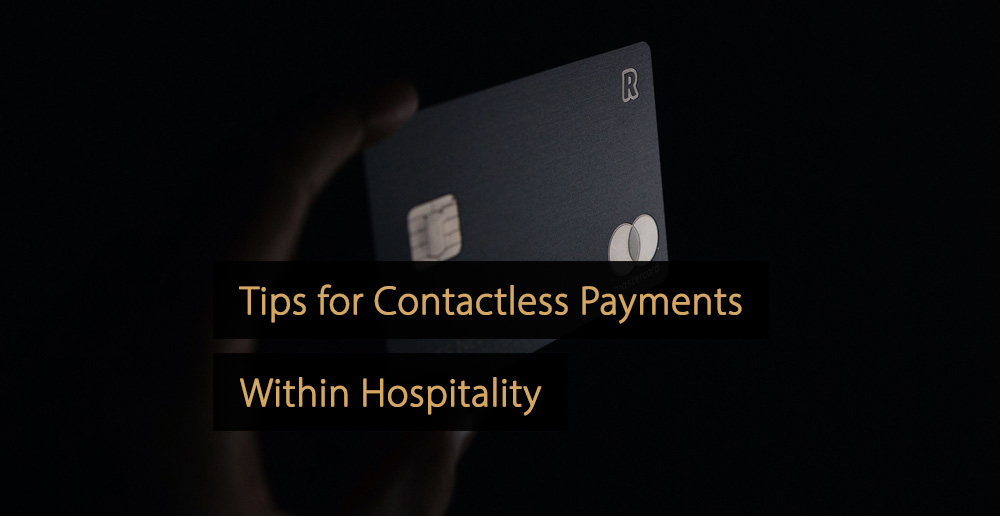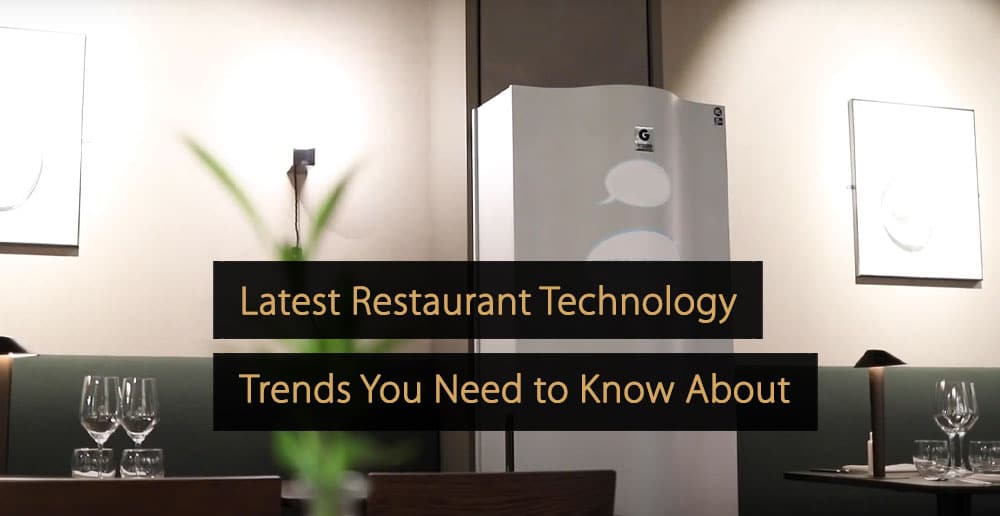Contactless payment methods are becoming increasingly popular throughout the hospitality sector and for good reason. They embrace some of the most cutting-edge technology while providing guests with a more user-friendly experience. It is important to take a look at this concept in greater detail.
Table of Contents:
- What is a Contactless Payment?
- How Do Contactless Payments Work Within the Hospitality Sector?
- 4 Reasons Why Contactless Payments are Getting Popular in the Hospitality Industry
- Video: How Does Contactless Payment Work?
- Examples of Contactless Payment Devices
- Examples of Contactless Payment Systems
- Contactless Check-In With a Mobile App
- Restaurant POS Systems: Contactless Payments and Other Trends
What is a Contactless Payment?
As the name suggests, this type of transaction enables users to avoid using cash or the physical implementation of credit cards. It instead relies upon wireless methods such as RFID technology. Debit cards, credit cards, and even smartphones can support this technique. Users will place their card or device close to a near-point terminal. The transaction can, after that, be completed.
You will also be interested to know that no type of PIN is required for a payment to be processed. This is quite convenient for those on the go or who may be in a public area. To ensure superior levels of safety, contactless payments are limited to a certain amount at any given time. The good news is that this very same technology has now entered the hospitality industry, and it can directly impact your guests’ experiences.
How Do Contactless Payments Work Within the Hospitality Sector?
The good news is that contactless payments are rather easy and straightforward. Devices that support this technology will display a WiFi logo that is turned 90 degrees on its side. Let’s imagine for a moment that a guest wishes to make a reservation at your premises. When prompted, he or she will first hold the card or device within two inches of the processing machine. Assuming the system recognizes the card and approves the transaction, the guest will be notified with a green light, a beep, or a similar means.
As mentioned previously, credit and debit cards can likewise be connected to a smartphone by downloading a dedicated application provided by the institution. They can then process a transaction (such as securing a hotel reservation) with a simple tap on the screen. Certain types of smartwatches are also beginning to accept this contactless payment method and are therefore slated to become quite popular soon.
4 Reasons Why Contactless Payments are Getting Popular in the Hospitality Industry
As seen from the observations above, one of the most pronounced hospitality trends involved contactless payment systems. It, therefore, stands to reason that managers need to consider their implementation to remain one step ahead of the competition. Let us now examine some of the most pronounced advantages your property can expect to leverage when employing this cutting-edge technology.
1. A Viable Hygienic Solution
You are already aware that the recent coronavirus outbreak has had a massive impact on the hospitality industry. This is why the notion of “business as usual” needs to be slightly redefined. Guests will be more concerned about hygiene than ever before. This trend is likely to continue for years into the future. Therefore, payments that preclude the use of physical contact are set to become some of the most sought-after methods. Hotels offering such services will undoubtedly rise head and shoulders above their competition.
2. Fast and Secure
Experts agree that contactless payments generally require only 15 seconds to complete. This is roughly twice as fast as a debit or credit card. Such rapidity is convenient for those who are pressed for time or have just completed the final leg of a long journey.
Furthermore, the hospitality sector can benefit from these payment methods because this system employs several unique encryption algorithms. If a card (or a phone) becomes lost, personal information cannot be made available to a third party. This also applies to duplicate transactions that are suspected of being fraudulent. Such points will give your guests extra peace of mind during their stay. Contactless payments utilize advanced wireless encryption, eliminating the chances of data becoming lost or corrupted.
3. Superior Levels of Customer Satisfaction
The end-user experience is critical to enjoying higher booking and retention rates. Contactless payments offer a streamlined means for users to complete a transaction in a much quicker time frame. Another important point is that many individuals will spend more if the transaction process is simplified. Thus, these methods can sometimes offer upgrades and similar in-house amenities that the guest might overlook. This brings us to the final (and perhaps most relevant) point.
4. The Ability to Offer Bespoke Loyalty Programs
Hotel managers are well aware of the benefits associated with loyalty programs. A handful of examples include:
- VIP rewards increase brand recognition;
- More positive reviews on websites such as TripAdvisor and Booking.com;
- An increased likelihood that guests will return to the property in the future.
Loyalty programs within the hospitality industry can offer guests points whenever they utilize a contactless payment system. Points may be allocated to provide reduced room rates, discounts at an in-house restaurant, and similar attractive offers that will enable your franchise or boutique property to stand out from the masses. Finally, it is important to mention that building a positive brand image in these critical times is key to long-term success.
Video: How Does Contactless Payment Work?
Below you find a video that shows how contactless payments exactly works.
Examples of Contactless Payment Devices
You might be aware that contactless payment methods have existed in one form or another since as far back as 2007. It, therefore, stands to reason that several unique devices can be used other than credit cards and smartphones. Each of these offers its own set of bespoke abilities to understand the options at your disposal better. Some of the most well-known devices which can be used to make these types of payments include:
In the future, these devices may even be used for other purposes, such as gaining secure access to a building or opening a specific door.
Examples of Contactless Payment Systems
The hospitality sector can leverage several advantages of modern contactless payment systems, and you will be pleased to learn that a host of options are at your disposal. This gives you and your team a greater sense of flexibility, enabling you to adopt the correct software package based on the needs of your current organization. Let’s look at some industries that have already begun to take advantage of tap-and-pay platforms.
Numerous Credit Card Agencies
It only stands to reason that most credit card companies have chosen contactless payment systems for the abovementioned advantages. This move indicates that they can remain one step ahead of the curve, and such modern technology helps ensure they remain highly competitive within today’s marketplace.
Banks and Building Societies
Large banks have likewise appreciated that contactless payment systems are here to stay. As most already provide their customers with dedicated mobile phone applications, it is quite easy to implement this novel software when making a transaction. Customers can now enjoy a quick, hands-free, and simple payment system at their immediate disposal. A growing number of cash points have likewise adopted this software.
Google Pay
The Internet has been just as keen to adopt these measures. When we consider that consumers now rely heavily upon purchases within the digital domain, some massive companies now offer contactless payments. Google Pay is arguably the most well-known provider, and physical retailers equipped to handle this service can offer their customers yet another secure means of completing a transaction. Unlike a standard credit card, an encrypted code is sent to the appropriate account when making a payment.
Apple Pay
Those who own a device such as an iPhone or iWatch are likely to possess the Apple Wallet application already. Apple Wallet enables consumers to purchase goods at brick-and-mortar locations (much like Google Pay), and additional third-party apps support this system. It is likewise possible to send funds to family members or friends via this service.
Samsung Pay
Samsung Pay is slightly different in relation to the two systems mentioned above. In this case, users can store their personal financial information (such as credit card details) directly within the application. This is used to pay at any checkout counter equipped with contactless payment software. The process is straightforward. First, the user will span an image of their credit card or a nearby bar code (such as one found on a product label). Once a screen tap confirms the purchase, the transaction will occur automatically. Samsung also offers additional amenities such as rewards points when specific transactions are made.
Fitbit Pay
Fitbit is a popular software package allowing users to track and improve their fitness levels. You might be surprised to learn that it also offers a tap-to-pay option. Similar to other systems, users will add their debit or credit card information to the tracker or Fitbit watch. Transactions will remain completely secure and are accepted at all locations supporting contactless payments.
Contactless Check-In With a Mobile App
Mobile check-in services are quickly becoming one of the mainstays of the hotel sector. This is the same reason why managers and stakeholders need to appreciate the options and benefits. How does this type of technology function? What are its primary advantages, and how can it be used to develop customer loyalty over time? The article “Mobile Check-In App for Hotels: What Are The Benefits?” will examine these and other metrics to provide you with the big picture. In days partially defined by an increasing level of competition, there is no doubt that innovative approaches will make all the difference in the world.
Restaurant POS Systems: Contactless Payments and Other Trends
A point of sale, or POS system, usually handles the contactless payments hospitality businesses process. Restaurant POS systems, in particular, are helping employees and customers alike by integrating with wider company systems and removing much of the unnecessary friction associated with payments.
Read “Restaurant POS Systems: The Latest and Future Trends” if you want to learn more about POS systems within the restaurant industry and some of the current and emerging trends associated with them.
It is now clear why contactless payments are becoming extremely popular throughout the hospitality sector. As this technology continues to evolve, even more properties will take advantage of all it offers. This is why offering such an option to your guests is a good idea. While there is certainly nothing wrong with traditional approaches to customer service, providing clients with even more payment options will ensure a pleasant and rewarding experience over time.
More Tips to Grow Your Business
Revfine.com is the leading knowledge platform for the hospitality and travel industry. Professionals use our insights, strategies, and actionable tips to get inspired, optimize revenue, innovate processes, and improve customer experience.Explore expert advice on management, marketing, revenue management, operations, software, and technology in our dedicated Hotel, Hospitality, and Travel & Tourism categories.
This article is written by:
Hi, I am Martijn Barten, founder of Revfine.com. With 20 years of experience in the hospitality industry, I specialize in optimizing revenue by combining revenue management with marketing strategies. I have successfully developed, implemented, and managed revenue management and marketing strategies for individual properties and multi-property portfolios.









Great article! The shift towards contactless payments will allow businesses to provide better omnichannel experiences. In 2021, more and more businesses will invest in unified payments technology. For instance, hotels will improve their pick-up and order delivery activities by equipping employees with mobile-point-of-sale (mPOS) systems.
You are doing such a great job with Revfine by providing such informative content. After reading this article, everybody will know the importance of contactless payment for hospitality.
Informative read! As a result of the pandemic, the demand for contactless payment solutions has increased exponentially. Businesses are adapting to new technology, which improves customer service while maintaining social distance.